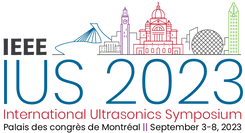Role of ultrasound elastography in the management of abdominal aortic aneurysm
In this presentation, we will discuss the clinical guidelines for abdominal aortic aneurysm (AAA) screening and patient selection for open surgery and endovascular repair. The role of strain imaging using B mode imaging on ultrasound to characterize wall strain and its correlation with multiphase CT and aortic growth will be discussed. The role of strain imaging using RF data to characterize thrombus organization following endoleak embolization will also be presented. Finally, the role of shear wave imaging to detect endoleak and evaluate thrombus organization will also be discussed. The value of the different approaches will be compared with the latest reports in the litterature.

